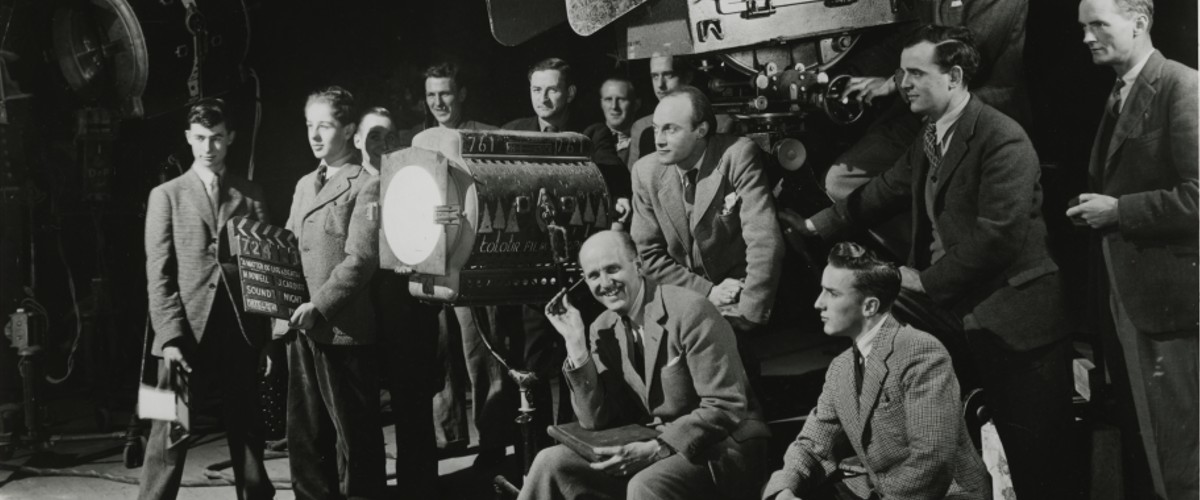At the beginning of “Made in England: The Films of Powell & Pressburger,” Martin Scorsese recounts how he first encountered the works of the legendary filmmaking duo of Michael Powell and Emeric Pressburger as a child under perhaps the worst conditions imaginable — on his family’s black-and-white television in substandard and edited prints that made hash of their visual elements. Even so, he found himself struck by the unique visions that saw them rise to the top of the British film industry, which managed to still ring true despite the reduced circumstances of their presentation. And yet, for more than 20 years after the dissolution of their partnership, their work was all but dismissed in their home country, a victim of changing tastes and the vitriolic critical and commercial reaction to one particular film. So much so that when Scorsese first met Powell in England in 1974, he was living in a small cottage and had been virtually blackballed from the industry over which he and his partner had once reigned.
This first meeting would prove to be an auspicious one for both. Within a few years, Scorsese would help spur a revival of “Peeping Tom,” the 1960 horror film that Powell would direct following the end of the partnership, that would see its reputation shift from “career-killing debacle” to “ahead-of-its-time masterwork,” that would lead to a resurgence of interest in the Powell-Pressburger canon as a whole, which could now be seen as they were meant to via restored prints, that should continue for as long as people are still willing to look upon cinema as an art form. Although the duo’s reputation hardly needs bolstering these days, it gets just that in this extraordinary exploration of their legacy by one of the many filmmakers who have found themselves enthralled and inspired by it.
Although ostensibly directed by David Hinton, a documentarian whose past credits include a 1986 episode of England’s “South Bank Show” focused on Powell, the dominant voice throughout is that of Scorsese, who serves as our guide to the films and the men behind them in a way that is of a piece with his own epic examinations of cinema history, “A Personal Journey with Martin Scorsese Through American Movies” (1995) and “My Voyage to Italy” (1999). Ironically, even though Scorsese didn’t actually direct this one, it is arguably the most personal of the bunch. Not only did he and Powell become close friends (with Powell going on to marry Scorsese’s longtime editor, Thelma Schoonmaker, in 1984) but, as he explains directly to the camera, many of the ideas and images that enthralled him as a viewer would turn up later on in his work, from how elements from “The Life and Death of Colonel Blimp,” Powell and Pressburger’s initially satiric and ultimately rueful exploration of British military authority, would crop up in films as varied as “Raging Bull” and “The Age of Innocence” (which coincidentally features a character named Archer, which was the name the duo gave to their partnership) to how the portrait of obsession painted so vividly in “The Red Shoes,” perhaps their most famous and celebrated work, would cast a shadow over “Taxi Driver.”
At the same time, this is more than two hours of Scorsese fanboying over a bunch of familiar clips aimed at a sympathetic audience. He knows these films inside out, but you never get the sense that he is merely rehashing old observations—he discusses them with such love and enthusiasm that even those unfamiliar will be swept up by the energy. Moreover, his observations are fascinating—such as his discussions of the vivid visual imagery on display in the astonishing “Black Narcissus” or how the surreal beauty of the one-of-a-kind “Tales of Hoffmann” exemplified Powell’s governing belief of how cinema allowed the various artistic disciplines to come together in one unique whole. Even when he is discussing lesser Powell-Pressburger projects, such as “The Elusive Pimpernel” (1949) and “Gone to Earth” (1950)—both of which were interfered with by their Hollywood producers—and admitting that they are ultimately wanting, the observations are so interesting that your interest will still be piqued.
Because the focus of “Made in England” is primarily on the Powell-Pressburger collaborations, the films that they made on their own — except for Powell’s “Peeping Tom” and, to a lesser extent, “Age of Consent” — end up getting pushed to the side a bit. That quibble aside, this is an examination of cinema history so rich in detail and observation that it rivals most current film school curricula while being uncommonly watchable and entertaining. That said, if you see this film — and you should if you have even the slightest interest in cinema history — be prepared to set aside a lot of time afterward. You’ll almost certainly want to take your own deep dive into their oeuvre as soon as it ends.




















